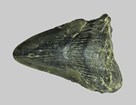Region 1- National Capital Area of the National Park Service includes a rich cultural and natural history. Parks in urbanized and fast-growing areas of the Mid-Atlantic cover Washington D.C. and parts of Maryland, Virginia, and West Virginia. Many sites include a diverse array of forests, mountains, and estuaries which support high levels of biodiversity in a narrow geographic range.
-
National Capital Parks-East
Article 1: Natural History in the National Capital Area

Region 1- National Capital Area of the National Park Service includes a rich cultural and natural history. Parks in urbanized and fast-growing areas of the Mid-Atlantic cover Washington D.C. and parts of Maryland, Virginia, and West Virginia. Many sites include a diverse array of forests, mountains, and estuaries which support high levels of biodiversity in a narrow geographic range. Read more
-
National Capital Parks-East
Article 2: National Capital Area Natural History - Biology

Biological collections include plants, fungi, insects and arachnids, reptiles and amphibians, fish, birds, mammals, and other invertebrates. These may include ‘type’ specimens which are used to formally represent new species. When researchers make observations about the park environment, they often collect voucher specimens to verify their observations. If these specimens are not consumed in analysis, they become part of the park’s collection. Read more
-
National Capital Parks-East
Article 3: National Capital Area Natural History Collections - Animals

NPS collections include vertebrate and invertebrate specimens such as mammals, birds, mollusks, crustaceans, insects and arachnids, and reptiles and amphibians. Collections may contain preserved specimens (either dried or stored in aqueous preservative solutions), images of specimens, study taxidermy skins, skeletal components, or associated items such as eggs or nests. Read more
-
National Capital Parks-East
Article 4: National Capital Area Natural History - Plants

Herbaria are repositories for vascular plants, bryophytes, lichens, and fungi. Plant specimens include a wide variety of native and non-native species. Specimens are used as references for comparisons and identifications, documenting species distribution and variation within species, and identifying fruiting and flowering times. Read more
-
National Capital Parks-East
Article 5: National Capital Area Natural History - Paleontology

Paleontology specimens are fossils of formerly living plants, animals, or naturally occurring tracks, impressions, and casts. They cover the entire span of geologic time and represent all kingdoms of life. Fossils dating back to the Paleozoic era (543 million years ago) represent the first signs of life on earth in the Nation’s Capital. Read more
-
National Capital Parks-East
Article 6: National Capital Area Natural History Collections

Region 1- National Capital Area of the National Park Service includes a rich cultural and natural history. Parks in urbanized and fast-growing areas of the Mid-Atlantic cover Washington D.C. and parts of Maryland, Virginia, and West Virginia. Many sites include a diverse array of forests, mountains, and estuaries which support high levels of biodiversity in a narrow geographic range. Read more
-
National Capital Parks-East
Article 7: National Capital Area Parks

There are 86 National Park Service units, including memorials, in Region 1- National Capital Area. Read more
-
National Capital Parks-East
Article 8: National Capital Area Natural History - Geology

Geological specimens include rocks, minerals, surface process samples, and soils. These specimens document the presence of geological materials, their mineral composition, structure and texture, and the processes that created them. Read more
-
National Capital Parks-East
Article 9: National Capital Area Natural History - Image Gallery

Image gallery for National Capital Area National History Exhibit Read more
-
National Capital Parks-East
Article 10: Maryland Mining Company

Canals constructed along the Potomac River, including the waterways of the Chesapeake and Ohio Canal and Patowmack Canal, were lifelines for people living along the Potomac River from 1831-1924. Locks controlling water flow allowed the efficient transport of coal and other materials to and from these communities. Lands surrounding these areas are also rich in natural resources, triggering the start of commercial gold mining operations in Montgomery County in 1865. Read more
-
National Capital Parks-East
Article 11: Dugongs and Megalodon Sharks in the National Capital Area

Unexpected finds in the National Capital Area provide clues to species distribution during different points in geologic history. A fossilized dugong rib bone found during construction of the Suitland Parkway indicates that these marine mammals, only found in Indo-Pacific oceans today, were present in an ancient ocean once covering this region 54-5 million years ago (MYA). Read more
-
National Capital Parks-East
Article 12: Helen Shaw Fowler and Kenilworth Aquatic Gardens

Civil war veteran Walter B. Shaw and his wife Luciana Miller purchased what is now known as Kenilworth Aquatic Gardens in 1879. Shaw was a gardener with a special interest in aquatic gardening. Cultivating the same passion in their daughter Helen, they developed a successful business raising and selling water lily and lotus varieties. Read more
-
National Capital Parks-East
Article 13: Dr. Madison Spencer Briscoe, Storer College, and Harper’s Ferry National Historic Park

Founded in Harper’s Ferry, West Virginia on October 2, 1867, Storer College was a school for freedmen after the Civil War. In its 90 years of existence, the school evolved, serving primary and secondary school students as well as college students. It was one of the first degree-granting four-year colleges that trained African American teachers during Reconstruction. Over 7,000 students attended Storer College. Read more
